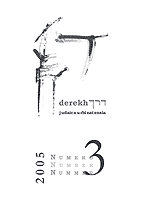Isolation or Symbiosis? Social and cultural relationships between Jews and Non-Jews in Medieval Europe
Isolation or Symbiosis? Social and cultural relationships between Jews and Non-Jews in Medieval Europe
Author(s): Edith WenzelSubject(s): Jewish studies
Published by: Parnaso s.r.l. Edizioni-Publishing House
Summary/Abstract: Well into the 1990s, the scholarly discourse on the relationship between Jews and Christians in the Middle Ages was generally approached from two directions, both heavily infl uenced by ideology and largely mutually exclusive: One position can be characterized somewhat simplistically by the term of ”symbiosis”. It presupposes a more or less undisturbed co-existence of Jews and Christians and a Jewish participation in Christian culture. This position was generally favoured by the representatives of the ”Wissenschaft des Judentums” in the late 19th and early 20th century. The other position is opposed to this concept. Representatives of this position stress the total isolation of the Jews in the context of a Christian culture. Some scholars maintain that this isolation resulted from the hostility of the Christian world; others also emphasize a self-imposed isolation. An example is the statement of Michael TOCH in his introduction to the history of the Jews in medieval Germany (1998): “For the a very long time two opposing and mutually exclusive positions, each infl uenced by a different world view, have dominated the way in which we view the relationship between Christians and Jews in the Middle Ages. The fi rst position is characterized by the concept of confl ict and holds that Jews were largely, if not completely, isolated - an isolation that, depending upon the observer’s starting point, was either self infl icted or seen to have been imposed by an antagonistic environment. (...)
Journal: Derekh Judaica Urbinatensia
- Issue Year: 2005
- Issue No: 3
- Page Range: 7-24
- Page Count: 19
- Language: English

